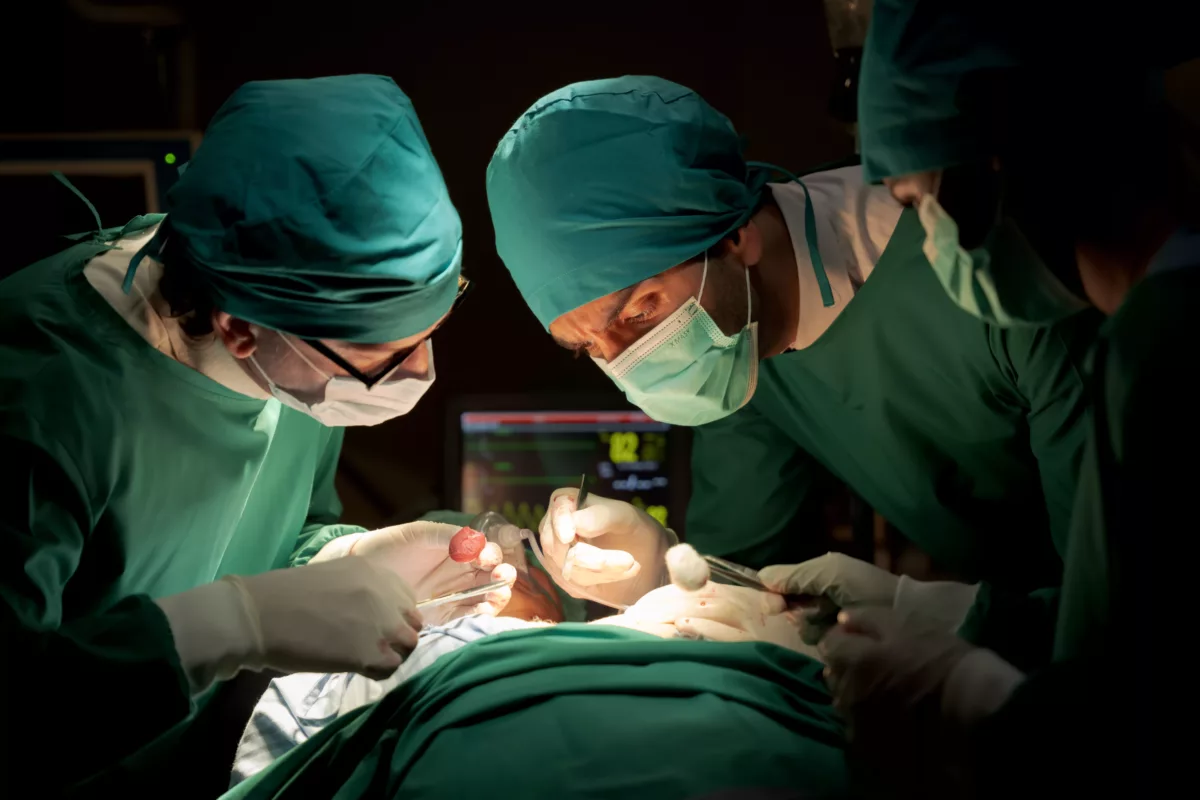A health condition in which the lower part of the aorta (the body’s main artery) becomes enlarged is called an abdominal aortic aneurysm. The primary artery of the body starts from the heart and moves through the center of the chest and the abdominal (belly) region. Moreover, it is the largest blood vessel in the body. Generally, it is considered a life-threatening condition because if an aortic aneurysm ruptures, it may cause internal bleeding.
The treatment for people with abdominal aortic aneurysms is different because it depends on multiple factors. For example, the severity and size of the aneurysm, how fast it grows, existing health problems, and others. Physicians usually identify an aortic aneurysm by performing imaging tests. As it is considered a medical emergency, people usually are treated by surgery.
Symptoms
In most cases, this condition develops slowly without causing any symptoms. That’s why it is difficult to diagnose it in the early stages. Furthermore, some aneurysms never rupture. While some aneurysms never grow, others may become too large over time and cause certain symptoms. Usually, people with abdominal aortic aneurysms experience the following symptoms. For example:
- A pulse near the belly button
- Back pain
- Persistent pain in the abdominal region or side of the belly
Immediately visit your healthcare professional if you experience sudden and severe pain.
Causes
This condition may appear anywhere along the body’s main artery. Commonly, aneurysms develop in the part of the aorta located in the abdominal (belly) area. Check below for some causes of abdominal aortic aneurysm:
- Atherosclerosis – This is a condition in which fat and other substances build up on the artery walls.
- Hypertension (high blood pressure) – Long-term hypertension may cause damage and weaken the aorta’s walls.
- Blood vessel diseases – All conditions that cause blood vessels to become inflamed may lead to abdominal aortic aneurysm.
- Aorta infections – In rare cases, certain bacterial or fungal infections may cause this condition.
- Trauma – These include falls, car accidents, and others.
Risk Factors
Doctors identified some factors that could elevate your risk of developing an abdominal aortic aneurysm. These include:
- Tobacco products – The strongest risk factor for abdominal aortic aneurysm is smoking. It weakens the body’s main artery walls as well as other blood vessel walls. Moreover, tobacco products significantly increase the risk of aneurysm rupture. Males aged between 65 to 75 years who are current or former smokers should have at least one ultrasound for abdominal aortic aneurysm.
- Age – This condition is mostly diagnosed in people over 65 years or older.
- Sex – Males are more likely to develop this condition than females.
- Race – White people are at increased risk of developing abdominal aortic aneurysms compared to other races.
- Family history of abdominal aortic aneurysm – If you have a parent or sibling with this condition, your risk of developing it increases significantly.
- Other aneurysms – If you experience an aneurysm in the part of the aorta located in the chest (also called thoracic aortic aneurysm) or in another large blood vessel in the body (including the artery behind the knee) also elevates the risk of this aortic aneurysm type.
What Are The Potential Complications of Abdominal Aortic Aneurysm?
People with this condition may experience some complications, especially without treatment. These include:
- Aneurysm ruptures
- Tears in one or more layers of the aorta walls (also known as aortic dissection)
- Embolization (it occurs when a blood clot or other debris breaks from the aneurysm and travels throughout the body, causing blockages of blood vessels in the brain, lungs, and other organs)
- Infections
- Kidney failure
- Ischemia
- Aorto-enteric fistula
- Stroke
The most dangerous complication of this condition is an aneurysm rupture that may cause life-threatening bleeding. Generally, the risk of rupture increases according to how fast the aneurysm grows and how large it is. Check below for some symptoms of an aneurysm rupture:
- Sudden and intense back or abdominal pain
- Hypotension (low blood pressure)
- Fast heartbeats
The aneurysms also increase the risk of developing blood clots in that area. When a blood clot breaks and travels throughout the body, it may cause blockages in other blood vessels that supply the brain, lungs, or other organs with blood. Commonly, people with blocked blood vessels experience pain and decreased blood flow to the legs, toes, kidneys, and abdominal region.
How to Prevent Abdominal Aortic Aneurysm?
There are some tips that may help prevent or even avoid an abdominal aortic aneurysm. For example:
- Quit smoking or never begin – If you face problems with smoking cessation, you should discuss it with your healthcare professional. Moreover, secondhand smoke also increases the risk of this condition.
- Dietary changes – It is advised to add more fresh fruits, vegetables, whole grains, chicken, fish, and low-fat dairy products. Limit salt and meats with saturated or trans fats.
- Monitor your blood pressure – If your doctor prescribes antihypertensives, you should take them exactly as recommended. Otherwise, it may lead to unpleasant results.
- Regular physical exercise – It is advised to aim for at least 30 minutes of physical exercise per day.
Diagnosis
Commonly, an abdominal aortic aneurysm is found during a physical examination or imaging test done for other reasons. However, doctors will examine your medical and family history and may ask some questions about the symptoms. Check below for some tests used to confirm the condition:
- Abdominal ultrasound – This is one of the most common tests used to diagnose abdominal aortic aneurysms. It uses sound waves to make pictures of the abdominal region (including the aorta).
- CT (computerized tomography) scans – This test uses X-rays to make cross-sectional images of multiple body structures and organs. It is used to get clearer images of the aorta. A CT scan can identify the size and shape of the aneurysms.
- MRI (magnetic resonance imaging) scans – It uses a magnetic field and radio waves to make detailed images of the abdominal area structures.
In some cases, doctors may use a liquid called contrast to get more detailed images.
However, it is recommended to get screened for abdominal aortic aneurysms, especially if you are a man older than 65 years old, and use tobacco products or not.
Women who have never smoked often do not need to be screened for this condition. In any case, there is not enough evidence to suggest that females over 65 years old with a history of smoking or a family history of abdominal aortic aneurysm should be screened. For more details, discuss it with your doctor.
Treatment
The treatment goal is to prevent an aneurysm from rupturing. Thus, doctors usually recommend regular checkups and imaging tests to monitor the aneurysm and surgery.
Surgery and Other Therapies
Healthcare professionals often recommend surgery when the aneurysm is 1.9 to 2.2 inches (4.8 to 5.6 centimeters) or larger. Surgery is also required if the aneurysm grows quickly or if the following symptoms occur. For example, tender or painful aneurysm or severe stomach pain.
Moreover, surgery type depends on the size and location of the aneurysm, age, existing health problems, and your preferences. Check below for other abdominal aortic aneurysm treatments:
- Endovascular repair – This treatment is commonly used to repair an abdominal aortic aneurysm. During this procedure, surgeons use a catheter (a long and flexible tube) that is inserted into an artery (usually in the groin) and then guided to the aorta. This surgery also helps prevent aneurysm ruptures. However, this procedure is not suitable for everyone with this condition.
- Open surgery – It is also called major surgery, in which surgeons remove the damaged aorta part and replace it with a graft.
Frequently Asked Questions
What is the most common cause of abdominal aortic aneurysm?
Commonly, people develop this condition due to atherosclerosis. It is a condition that causes a buildup of plaque on the artery walls. However, abdominal aortic aneurysms may occur due to other causes as well.
Can you live with an abdominal aortic aneurysm?
Generally, people can live with this condition. A lot of people have a small aneurysm that often does not cause any symptoms. Anyway, regular checkups are recommended for these people.
What are the symptoms of a blocked aorta in the stomach?
Immediately contact your healthcare professional if any of the following symptoms occur. Examples include:
- Abdominal (belly) or back pain
- Passing out
- Clammy skin
- Dizziness
- Nausea
- Vomiting
- Fast heart rate
- Shock
This article does not contain all possible symptoms. Ask your healthcare professional if you have additional questions.




